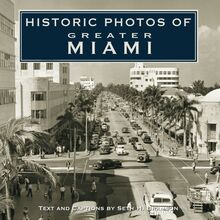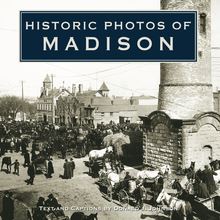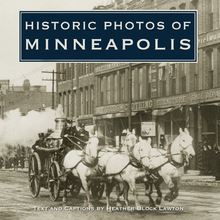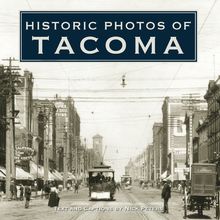Historic Photos of Chattanooga , livre ebook
171
pages
English
Ebooks
2006
Vous pourrez modifier la taille du texte de cet ouvrage
Obtenez un accès à la bibliothèque pour le consulter en ligne En savoir plus
Découvre YouScribe en t'inscrivant gratuitement
Découvre YouScribe en t'inscrivant gratuitement
171
pages
English
Ebooks
2006
Vous pourrez modifier la taille du texte de cet ouvrage
Obtenez un accès à la bibliothèque pour le consulter en ligne En savoir plus
Publié par
Date de parution
01 juin 2006
Nombre de lectures
1
EAN13
9781618586094
Langue
English
Poids de l'ouvrage
23 Mo
Publié par
Date de parution
01 juin 2006
Nombre de lectures
1
EAN13
9781618586094
Langue
English
Poids de l'ouvrage
23 Mo
HISTORIC PHOTOS OF
CHATTANOOGA
T EXT AND C APTIONS BY W ILLIAM F. H ULL
View of downtown Chattanooga from the north side of the Tennessee River, known as Hill City. The two-story building to the right is the Hill City Post Office on Frazier Avenue. Directly behind it stands the Walnut Street bridge. In the center background the large building with the smokestack is the Chattanooga Brewery; to its left stands the distinctive tower of St. Paul s Episcopal Church. Photograph by W. H. Stokes (ca. 1896)
HISTORIC PHOTOS OF
CHATTANOOGA
Turner Publishing Company
200 4th Avenue North Suite 950
Nashville, Tennessee 37219
(615) 255-2665
412 Broadway P. O. Box 3101
Paducah, Kentucky 42002-3101
(270) 443-0121
www.turnerpublishing.com
Copyright 2006
This book or any part thereof may not be reproduced or transmitted in any form or by any means, electronic or mechanical, including photocopying, recording, or by any information storage and retrieval system, without permission in writing from the publisher.
Library of Congress Control Number: 2006902318
ISBN: 1-59652-246-1
Printed in the United States of America
07 08 09 10 11 12 13 14-0 9 8 7 6 5 4 3 2
C ONTENTS
A CKNOWLEDGMENTS
P REFACE
P RE -C IVIL W AR TO THE C ENTENNIAL (1860-1900)
A C ITY AT THE T URN OF THE C ENTURY (1900-1917)
T HE F IRST W ORLD W AR AND A D EVELOPING M ETROPOLIS (1918-1939)
F ROM THE F ORTIES TO A M ODERN C ITY (1940-1970 S )
N OTES ON THE P HOTOGRAPHS
A cannon at Point Park on Lookout Mountain is a silent reminder of the great struggle that took place in Chattanooga during the American Civil War.
A CKNOWLEDGMENTS
This volume, Historic Photos of Chattanooga , is the result of the cooperation and efforts of many individuals, organizations, institutions, and corporations. It is with great thanks that we acknowledge the valuable contribution of the following for their generous support.
Chambliss, Bahner Stophel, P.C.
Erlanger Medical Center
Miller Martin, PLLC
Chattanooga Fire Department
Chattanooga-Hamilton County Bicentennial Library--Local History and Genealogy Department
Chattanooga Regional History Museum
Tennessee American Water
Tennessee State Library and Archives
We would also like to express our gratitude to Karen Myrick for providing research, assisting the author, and contributing in all ways possible.
And finally, we would like to thank the following individuals for their valuable contribution and assistance in making this work possible:
Mrs. Earl E. Millwood, daughter of the late Paul Heiner
Bruce Garner, Chattanooga Fire Department
Randall Herron, Chattanooga Fire Department
Jim Reece, Chattanooga-Hamilton County Bicentennial Library
Karina McDaniel, Tennessee State Library and Archives
P REFACE
Chattanooga has thousands of historic photographs that reside in archives, both locally and nationally. This book began with the observation that, while those photographs are of great interest to many, they are not easily accessible. During a time when Chattanooga is looking ahead and evaluating its future course, many people are asking, How do we treat the past? These decisions affect every aspect of the city--architecture, public spaces, commerce, tourism, recreation, and infrastructure--and these, in turn, affect the way that people live their lives. This book seeks to provide easy access to a valuable, objective look into Chattanooga s history.
The power of photographic images is that they are less subjective in their treatment of history. While the photographer can make decisions regarding what subject matter to capture and some limited variation in its presentation, photographs do not provide the breadth of interpretation that text does. For this reason, they provide an original, untainted perspective that allows the viewer to interpret and observe.
This project represents countless hours of research and review. The researchers and author have reviewed thousands of photographs in numerous archives. We greatly appreciate the generous assistance of the archivists listed in the acknowledgments of this work, without whom this project could not have been completed.
The goal in publishing this work is to provide broader access to a set of extraordinary photographs that seek to inspire, provide perspective, and evoke insight that might assist people who are responsible for determining Chattanooga s future. In addition, the book seeks to preserve the past with adequate respect and reverence.
The photographs selected have been reproduced in black and white to provide depth to the images. With the exception of touching up imperfections caused by the damage of time, no other changes have been made. The focus and clarity of many images is limited to the technology and the ability of the photographer at the time they were taken.
The work is divided into eras. Beginning with some of the earliest known photographs of Chattanooga, the first section records photographs from the Civil War through the end of the nineteenth century. The second section spans the beginning of the twentieth century to World War I. Section Three moves from World War I to World War II. Finally, Section Four covers World War II to the 1970s.
In each of these sections we have made an effort to capture various aspects of life through our selection of photographs. People, commerce, transportation, infrastructure, religious institutions, educational institutions, and scenes of natural beauty have been included to provide a broad perspective.
We encourage readers to reflect as they walk through the streets of downtown, along the riverfront, or atop Lookout Mountain. Cannons were once positioned around the city, riverboats once lined the banks of the Tennessee, and many buildings, long since demolished, stood where newer buildings of the late twentieth century stand today. It is the publisher s hope that in utilizing this work, longtime residents will learn something new and that new residents will gain a perspective on where Chattanooga has been, so that each can contribute to its future.
Todd Bottorff, Publisher
Ten years after the end of the Civil War, Market Street has been rebuilt. Lovemans Department Store will be built at the corner of Market and 8th streets where the marble yard stands. The steeple in the distance on the right side of the street belongs to the First Presbyterian Church. (1875)
P RE -C IVIL W AR TO THE C ENTENNIAL
1860-1900
Forty years after the Declaration of Independence was proclaimed, a ferry was established on the banks of the Tennessee River at what would be known as Ross s Landing. Put in place by John Ross, the future principal chief of the Cherokee Nation, the city of Chattanooga was born; but, in 1838 the Cherokee were removed from their homeland on the tragic Trail of Tears. Settlers moved in, and by the 1850s the town was already served by three railroads. In a short time Chattanooga had become so important that Union generals would feel compelled to march on the city if the South was to be subjugated.
The year 1863 saw that event come to fruition in a monumental clash at nearby Chickamauga, which sent shattered federal troops streaming into Chattanooga to be hemmed in by Braxton Bragg s Confederate army. Desperate to break out, the Union armies, under General Ulysses S. Grant, would confront the rebel armies and drive them back into Georgia.
Chattanooga was converted into a supply and production center for the remainder of the war, and fed the avaricious Sherman as he split Georgia and marched to the sea. Once the war was over, some Chattanoogans returned to slowly rebuild their city. Still others, who had come to the city in blue uniforms during the war, returned to buy the rolling mills and other factories built here by the U.S. Army. By the 1870s, they would start Chattanooga on its way to becoming a Southern industrial center.
Chattanoogans were embracing change as well. In 1882, the miracle of electric lights thrilled the growing town when 26 lights were lit one evening on a downtown street. By 1888, the town was booming: factories and foundries were humming, neighborhoods were taking shape, trolley lines had become common, and a proposal to construct a major bridge across the unruly Tennessee River was on its way to becoming a reality.
By the end of the century the river port was busy. The town was the county seat of Hamilton County. Chattanooga had a fine newspaper, the Chattanooga Times , founded by Adolph Ochs, a man who would eventually control the New York Times . The Chickamauga-Chattanooga National Military Park was dedicated. And two rail inclines now scaled Lookout Mountain, where two hotels allowed visitors to view the natural beauty of the town in the valley below.
Wartime view of Chattanooga looking west toward Cameron Hill. Building at far left with the bell tower is City Hall, located on Market Street. Flag draped on Kennedy-Nottingham house in far background indicates that the body of General McPherson, killed in the Battle of Atlanta, lies in state there. (July 1864)
The Bluff Furnace was built under the ambitious guidance of ironmaster Robert Cravens. Completed in 1854, it was the first operation in the southern Appalachians to use coke to fire the foundry operations. When the Civil War began, parts of the operation were shipped to Alabama. Union engineers would salvage some of the remaining material to build a supply bridge across the river near the bluff. (ca. 1858)
Point Park was a popular place with occupying federal troops in Chattanooga. An officer and a lady view the valley below with the Tennessee River in the background. (ca. 1864)
View of Chattanooga under Union occupation looking southwest with Lookout Mountain in the background. Church at left-center is First Presbyterian, which was shelled by Union artillery during a special service. Behind the church sits the long Western and Atlantic train shed. The locomotive station was situated acr














